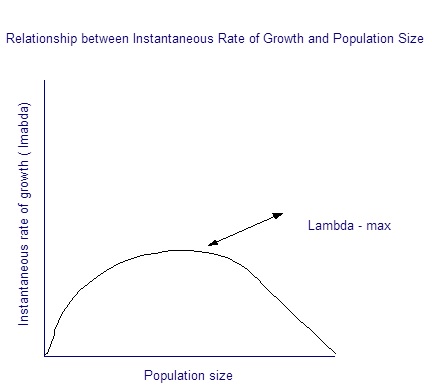Topics Covered in this Section
8.1 Unit Objectives and Textbooks
8.2 Zoo and Wildlife Management
8.3 Establishing Management Strategies
AGLS 6502 Lecture 8- Managing Exploited Species
8.1 Unit Objectives and Textbooks
Objectives
- What is an Exploited Wildlife Species
- What is Sustainable Yield Harvesting
- Estimating Sustainable Harvest Rates
- Achieving Sustainable Yields
- Hunting of Wildlife in T&T
- Management of Sustainable Harvesting
- Big Game (Ch. 15)
- Small Mammals (Ch 16)
- Water Fowl (Ch. 16)
- Shore and Upland Birds (Ch. 18)
- Fisheries (Ch. 19)
Textbooks
Anderson Chapters # 15, 16, 17, 18, 19
8.2 Zoo and Wildlife Management - "Management of Exploited species"
Developing the Harvest Management Program
- What is the status of the resource/population
- Defining the goals of the management program
- Establishing the management strategies to attain these objectives
- Determining how closely you attained your objectives with the strategies chosen.
Inventory
- What is the distribution of habitats for the species?
- Are these areas large enough for a viable population of the species?
- What is the size of the population in these habitats?
- What is the reproductive performance of these populations?
- what are the natural mortality factors?
Getting the information
- Agency lead Surveys
- Hunter provided data.
Establishing population objectives
Management of game populations attempts to maximize the number of individuals that can be taken from a population, without extirpation of that population. (i.e. MSY -Maximum sustained yield).
Optimum strategy to harvest a population near K/2, the Biological carrying capacity is difficult to estimate on an annual basis.

Some theory
Intuitive Judgment and interpretation of long-term harvest data, population indices and physiological indices need to be used to determine the desired harvest level.
Usually these harvest objectives are expressed in terms of number of individuals/km2 (i.e. A density target).
Thus, the manager may want to see an annual increase in population of 10 percent while maintaining a specific rate of take (number of animals taken) or effort (number of hunters).
8.3 Establishing Management Strategies
The range of management strategies, which can be used by the wildlife manager, include:
- Manipulation of available habitats
- Hunting regulations (control of take and effort)
- Control of predators
- Game farming and artificial stocking
- Designation of refuges and other protected areas.
Manipulation of available habitats
Can include the use of plantings, conversion of cover types from forest to scrub or vice versa, management of wildlife corridors.
Management of vegetation specifically for wildlife production can be extremely costly. Often opportunities for manipulation of this factor needs to be combined with other natural resource management e.g. timber management or other resource uses for these to be cost effective.
Hunting regulations
Usually the approaches which have been used include:
- Timing of the opening of the season
- Length of the season
- Age /sex specific harvest
- Bag limits
- Legal hunting devices.
- Regulation of number of hunters.
The most important consideration here is the acceptance of the hunters of these restrictions.
Control of predators
Although historically predators on harvested species have been heavily persecuted, due to their competition with humans for game species, wildlife managers commonly avoid this approach.
The low population densities of most predators, and the threatened status of many, often preclude their culling for increased game availability.
However, where these species remain common (e.g. wolves in Alaska) their population regulation has been considered a viable management option, though public support for such strategies is often lacking.
Game farming for artificial stocking
Although this practice is often preferred by hunters and the public, the approach has several limitations. It should be noted that studies of pen reared animals suggest that their survival in the wild is often very low, and their cost per animal caught is extremely high.
Often this approach has been used for management of threatened species, rather than for game species.
Refuge designation
Often used for migratory species, it can also be used for other species and have been used historically to protect important migratory routes, or critical breeding habitats.
Their role in game management has been as a source population for surrounding habitats which have diminished game populations.
Evaluation of the harvest Management
Measuring success:
- How much recreation was provided?
- Was there public acceptance of the program?
- Were there economic benefits?
- Leopold, A. 1933. Game Management. The University of Wisconsin Press. Madison, Wisconsin.
- Strickland, M.D., H.J. Harju, K.R. McCaffery, H.W. Miller, L.M. Smith and R.J. Stoll. 1996. Harvest Management. Jn. T. A. Bookhout (ed.) Research and Management Techniques for Wildlife and Habitats. The Wildlife Society. Bethesda, Maryland.
- Teer, J. 0., 1997. Management of ungulates and conservation of Biodiversity. In. C.H. Freese (ed.) Harvesting Wild Species: Implications for Biodiversity Conservation. John Hopkins Press. Maryland.
